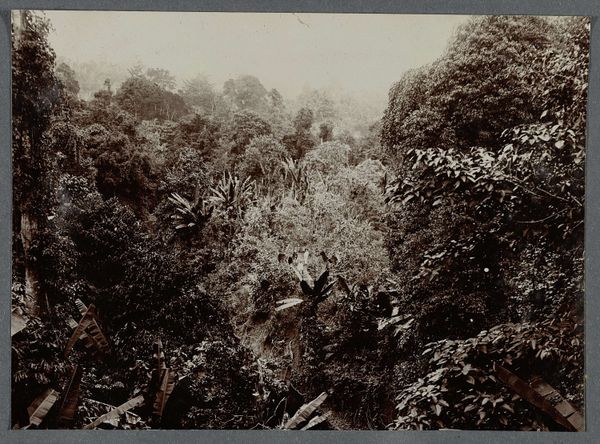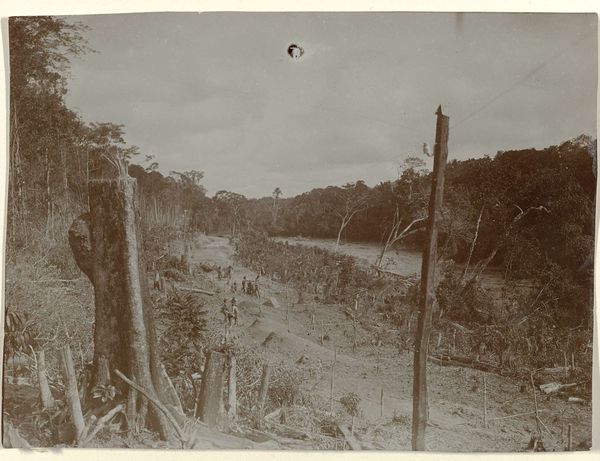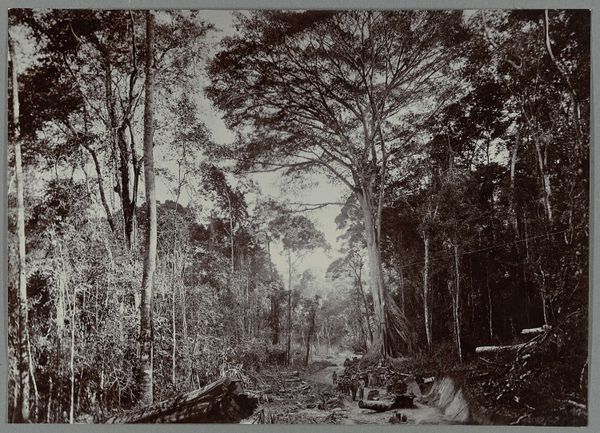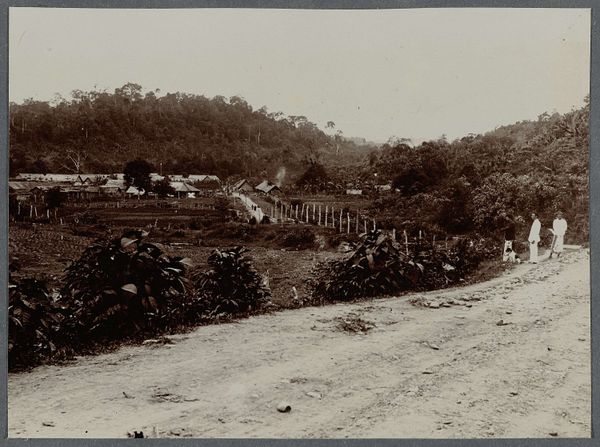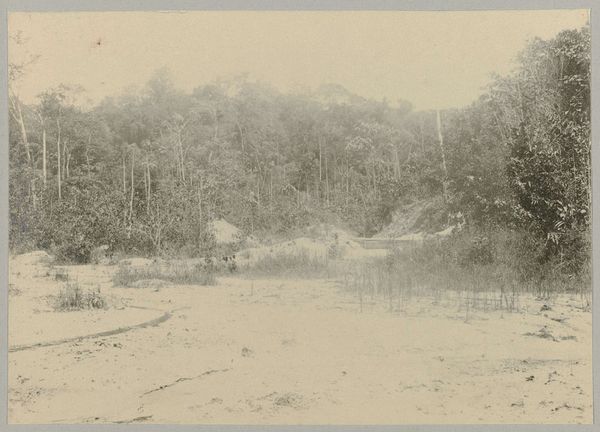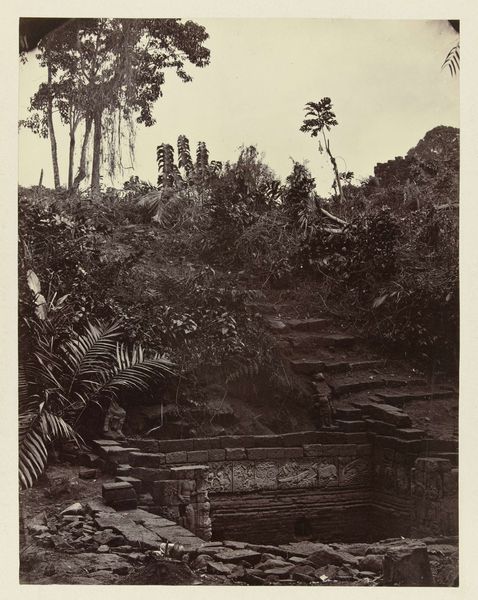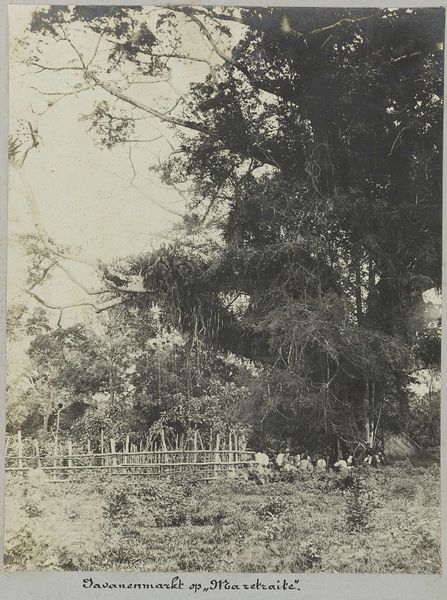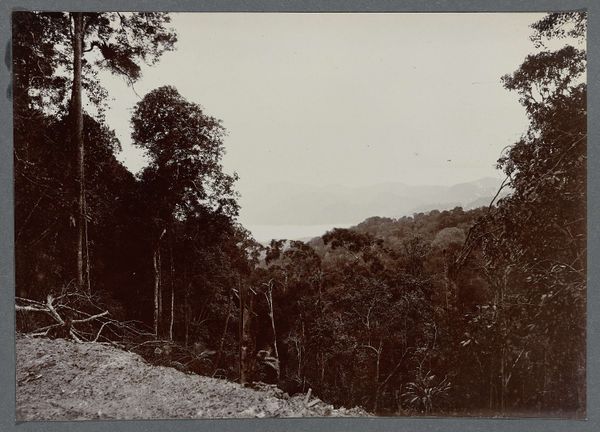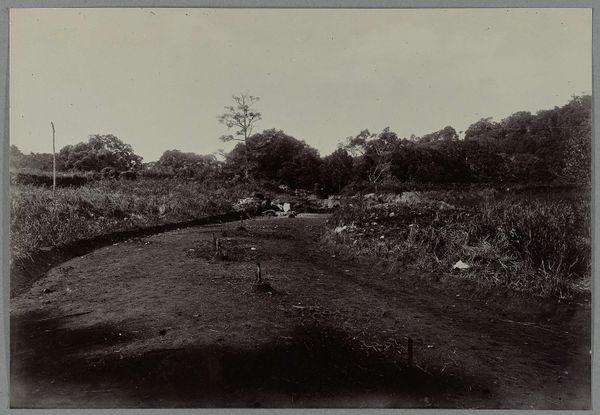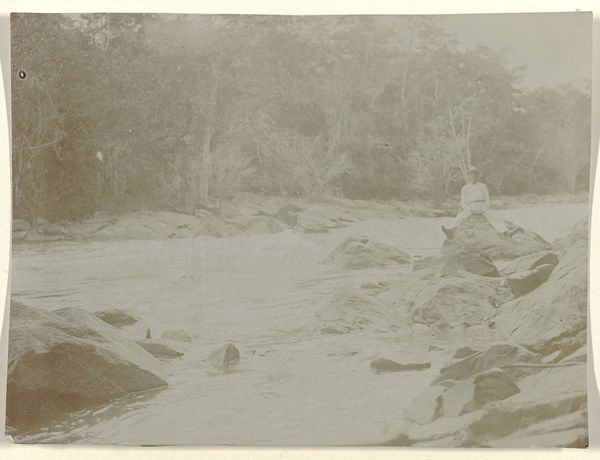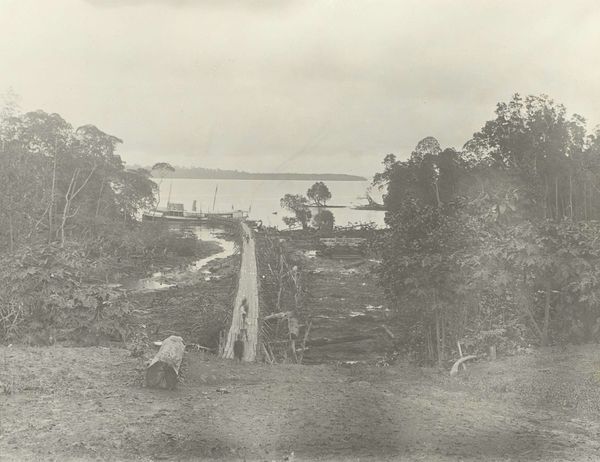
Aanleg van een spoorweg bij de Sarakreek in Suriname 1905 - 1910
0:00
0:00
photography
#
pictorialism
#
landscape
#
charcoal drawing
#
photography
#
pencil drawing
#
watercolor
#
realism
Dimensions: height 84 mm, width 113 mm
Copyright: Rijks Museum: Open Domain
Curator: The photograph before us, taken by Jacob Evert Wesenhagen between 1905 and 1910, depicts the "Construction of a Railway near the Sarakreek in Suriname." What is your immediate impression? Editor: My first thought is about the palpable sense of intrusion. That raw, almost violent gash cut through the landscape, dividing the untouched jungle. The muted tones amplify the somber mood. Curator: Exactly. Beyond the visual, we must recognize the profound implications of this scene. This wasn’t just building a railway. It's a stark symbol of colonialism, resource extraction, and the forced labor that indelibly marked Suriname's history. The railway embodies progress for some, but it came at a devastating social and environmental cost. Editor: The presence of figures in the foreground is interesting. Their attire marks them as belonging to the colonizer group, standing amidst workers. Notice the striking contrast. They appear almost superimposed upon the landscape, symbolizing dominion. What cultural memory is encoded into these carefully constructed representations of labor? Curator: The photograph as a whole appears staged, despite the harsh working conditions; even with a landscape aesthetic. It recalls debates around Pictorialism's aestheticisation of photographic truth at the time. The image is not merely documenting but rather crafting a particular narrative. Is it attempting to conceal or perhaps legitimize these colonial enterprises? Editor: The railway itself becomes a potent icon here—a physical manifestation of power. But also one of disconnection. It is creating something 'new' whilst violently erasing histories. Does it not highlight a colonial vision imposed with scant regard for pre-existing routes, waterways, or indeed, the very contours of the land? Curator: The image's value lies in prompting us to critically assess the legacy of colonialism, especially when reflecting on its destructive intersectional effect of capitalist and racist exploits. Editor: Yes. Beyond documentation, the photograph encapsulates a crucial—if uncomfortable—dialogue about progress, power, and enduring visual symbols of colonial imposition. It’s a window into how images served (and still can serve) to legitimise specific socio-political and economic world views.
Comments
No comments
Be the first to comment and join the conversation on the ultimate creative platform.



